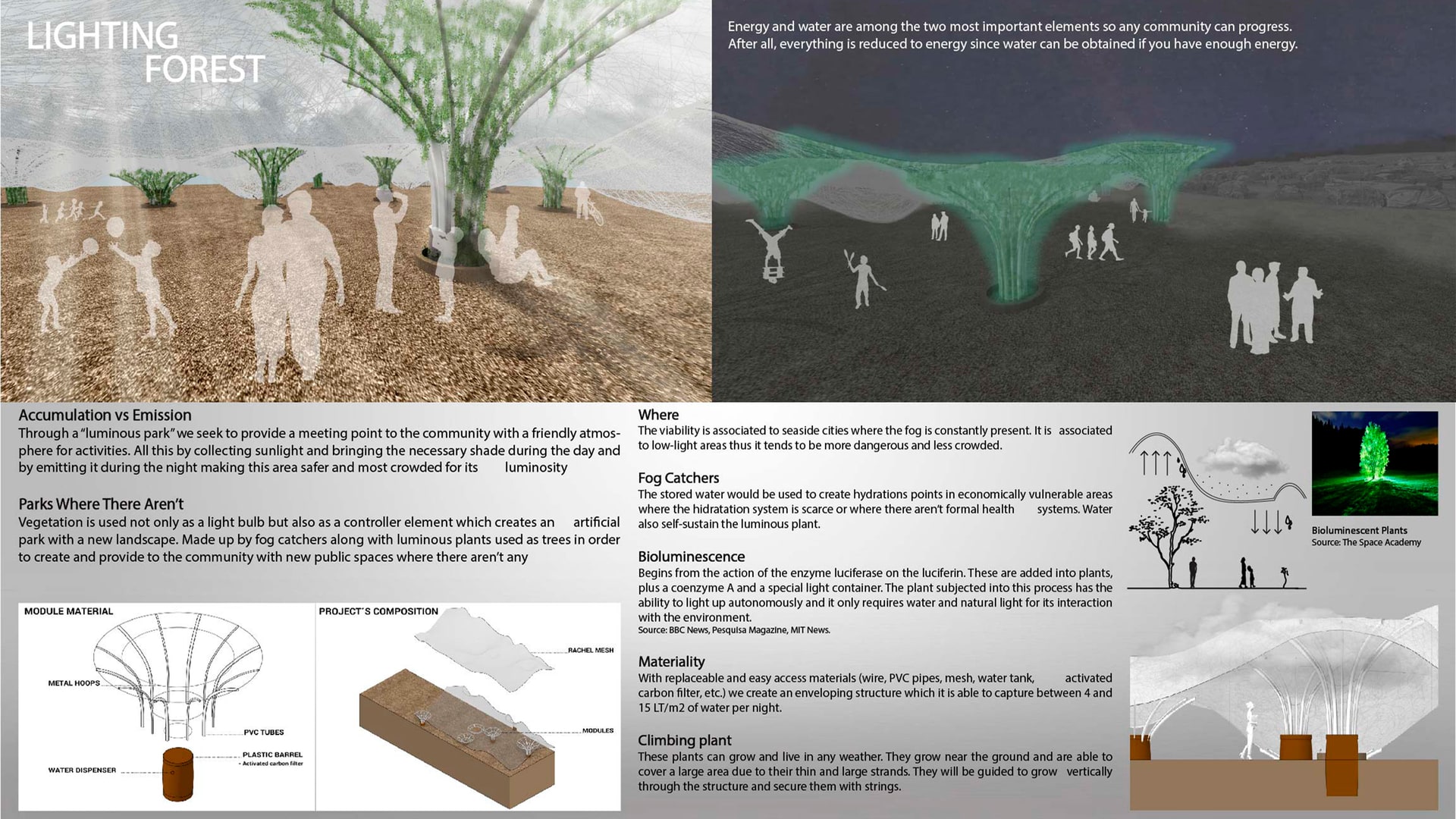Project Description
Energy and water are among the two most important elements so any community can progress. After all, everything is reduced to energy since water can be obtained if you have enough energy. Through a “luminous park” we seek to provide a meeting point to the community with a friendly atmosphere for activities. All this by collecting sunlight and bringing the necessary shade during the day and by emitting it during the night making this area safer and most crowded for its luminosity Parks Where There Aren’t: Vegetation is used not only as a light bulb but also as a controller element which creates an artificial park with a new landscape. Made up by fog catchers along with luminous plants used as trees in order to create and provide to the community with new public spaces where there aren’t any Where: The viability is associated to seaside cities where the fog is constantly present. It is associated to low-light areas thus it tends to be more dangerous and less crowded. Fog catchers: The water collected by this system would be used by vulnerable areas where the water is scarce or where there is an inadequate modern sanitation systems. The water will also self-sustain the luminous plant. Bioluminescence: The bioluminescence begins from the action of the enzyme luciferase on the luciferin. These are added into plants, plus a coenzyme A and a special light container. The plant subjected into this process has the ability to light up autonomously and it only requires water and natural light for its interaction with the environment. Materiality: With replaceable and easy access materials (wire, PVC pipes, mesh, water tank, activated carbon filter, etc.) we create an enveloping structure which it is able to capture between 4 and 15 LT/m2 of water per night. Climbing plant: These plants can grow and live in any weather. They grow near the ground and are able to cover a large area due to their thin and large strands. They will be guided to grow vertically through the structure and secure them with strings.
